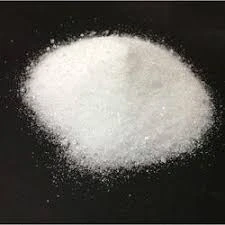The Role of Adhesion Additives in Modern Materials
In the domain of material science and manufacturing, the importance of adhesion cannot be overstated. Adhesion additives play a critical role in improving the bonding between different materials, ensuring the integrity and durability of products. These additives are specially formulated agents that enhance the adherence of coatings, paints, and adhesives to a variety of substrates, leading to improved performance and longevity of the final product.
Understanding Adhesion Additives
Adhesion additives are substances incorporated into formulations to promote a strong and durable bond between layers or between a coating and its substrate. They can be derived from various chemical families, including silanes, waxes, and polyethylene glycols. The choice of adhesion additive depends on the specific application and the materials involved.
One of the primary functions of adhesion additives is to modify the surface energy of the substrate. By doing so, they facilitate better wetting of the surface, which is crucial for achieving strong adhesion. When a coating is applied to a surface, a high degree of contact between the coating and the substrate leads to stronger mechanical interlocking and improved molecular bonding.
Applications Across Industries
Adhesion additives are used in a wide range of industries, from automotive and aerospace to construction and consumer goods. In the automotive sector, for instance, adhesion additives are essential in ensuring that paints and coatings adhere properly to complex surfaces, which often consist of metals, plastics, and composites. This not only enhances the visual appeal of vehicles but also provides a protective layer against corrosion and degradation.
In the realm of construction, adhesion additives are key to the performance of adhesives used in tiles, drywall, and other building materials. They enhance the bond strength, allowing for more resilient constructions that can withstand environmental stressors. Additionally, adhesion additives help in the formulation of sealants and caulks, ensuring they adhere to surfaces effectively and maintain their integrity over time.
adhesion additive

The Science Behind Adhesion
The effectiveness of adhesion additives is rooted in their chemical structure and the interactions they promote. For example, silane-based adhesion promoters can chemically bond with hydroxyl groups on glass and metal surfaces, creating a stronger adhesive layer. Similarly, wax additives can enhance hydrophobic properties, which is crucial for applications where moisture resistance is required.
Another critical aspect of adhesion science is the concept of interphase. The region at the interface between two materials is where adhesion takes place. Adhesion additives can modify the properties of this interphase zone, leading to improved adhesion performance. This is particularly important when dealing with challenging surfaces or when the materials involved have significantly different properties.
Challenges and Innovations
Despite their benefits, the use of adhesion additives is not without challenges. Compatibility issues can arise when additives are introduced into a formulation, potentially affecting the overall performance of the product. This necessitates thorough testing and evaluation of each additive to ensure it does not compromise other desired properties, such as flexibility, durability, and chemical resistance.
Innovations in adhesion technology are continuously evolving, with researchers exploring new chemical formulations and combinations of existing additives. For instance, bio-based adhesion additives are gaining traction as industries strive to adopt more sustainable practices. These innovations aim to enhance adhesion while minimizing environmental impact, responding to the growing demand for eco-friendly materials.
Conclusion
Adhesion additives are essential components in the formulation of many materials across various industries. They significantly enhance the ability of coatings and adhesives to bond effectively to a range of substrates, improving product performance and longevity. As technology advances and the demand for sustainable materials increases, the development and application of adhesion additives will undoubtedly continue to evolve. Future innovations will likely pave the way for even more effective solutions, addressing the complex challenges faced in adhesion science today. Understanding these dynamics will be crucial for manufacturers aiming to deliver high-quality, durable products in an increasingly competitive market.
-
Understanding Methyl Hydroxyethyl Cellulose (MHEC) – Properties, Benefits & ApplicationsNewsNov.25,2025
-
A Comprehensive Guide to Methyl Ethyl Hydroxyethyl Cellulose: Applications and Industry InsightsNewsNov.24,2025
-
Understanding Methyl 2 Hydroxyethyl Cellulose: Uses, Benefits & Industry InsightsNewsNov.24,2025
-
Hydroxyethyl Methyl Cellulose HEMC: Industrial Uses, Benefits & Future TrendsNewsNov.23,2025
-
HEMC Cellulose: Versatile & Sustainable Industrial Polymer | YoungcelNewsNov.23,2025
-
Methyl Hydroxyethyl Cellulose: Versatile Building Block for Industry & SustainabilityNewsNov.23,2025




